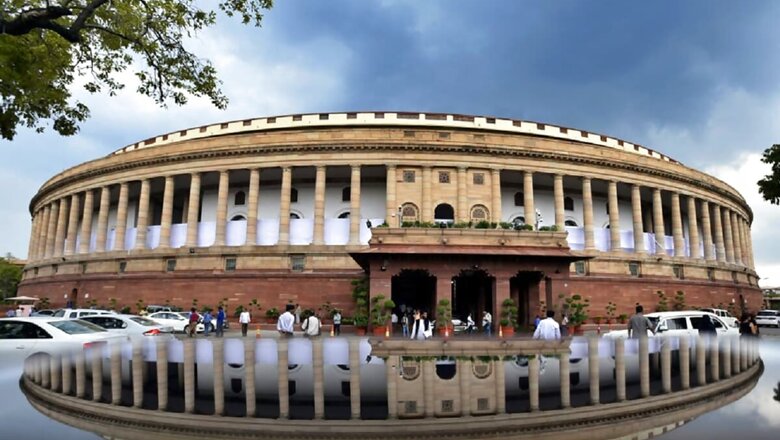
views
Have you ever heard of an NRI student having died by suicide because she was harassed as a ‘quota’ student? Have you ever heard of anyone arguing about ‘merit’ while discussing the management quota? Have you ever heard of someone like a Subramanian Swamy being referred to as ‘quota’ MP? There is a socio-political category— masculine, able-bodied, Savarna, heterosexual upper-class male — that is capable of creating narratives that it wants. When one from them accesses an institution through the system of quotas, the narrative is not about one being a beneficiary, but the system benefiting. The premium payment that it makes to the institutes through the Management and NRI quota seats are cited as the reason that institutions are running. Based on 2015-16 reports, an income of Rs 50,000 per month places an individual among the richest 0.4 per cent of the population[1]. The members of this category, despite being in the top one per cent of the population, prefer to call themselves ‘middle class’. This political class, leveraging the consumption power of the middle class, wields enormous power in perpetuating any narrative it wants.
Why are debates around the management quota never about compromise of so-called merit? An upper-class individual is seen as having ‘talent’: the stereotype, which itself is a reflection of the fact that this section comes predominantly from the dominant caste, whose talents are never questioned. Therefore, a system that gratifies an attribute that is associated with the dominant caste is not deprecated. For example, quota based on capitation fee is not viewed pejoratively while affirmative action based on identities such as woman, disabled, caste or tribe takes an abusive angle, because ‘wealth’ is an attribute of the dominant caste.
Similarly, there are certain domains that are controlled by the dominant caste; and when these domains become the basis for quota, there is no indignity attached to it. For example, when the Government nominates “persons having special knowledge or practical experience in respect of literature, science, art and social service” these persons are considered as doing an honour to Rajya Sabha by elevating the debates in the House. The 12 members, nominated to Rajya Sabha, are not referred to as ‘reserved quota MPs’ the way SC or ST MPs are, even though the latter are in fact elected by people just like all the other MPs, but from reserved constituencies. Does this imply that MPs from SC and ST categories, who bring their lived experiences to make the discussions richer in Rajya Sabha not elevating the debates in the House? What constitutes elevated debate?
Since independence, the Government has nominated 136 members to the Rajya Sabha. Of these, 50 are Brahmins. There are 43 others from dominant castes. There are only 4 from SC, 4 OBC and 1 ST. And 22 were women. Among 17 in the category of ‘artists’, 9 are Brahmins, 3 others from dominant castes, and none are SC or ST. With the predominance of Brahmins and the dominant caste among such nominations, why should this entire nomination system in the Rajya Sabha not be called as a reservation for the dominant caste?
The key is identifying where the problem stems from. The institutions that control the domains of art, science, literature and social service have themselves been captured by this social category. And the academics from this social category do not have to worry about the barriers that the SC or an Adivasi academic has to face, as evident from the recent incident in Jadavpur University where a female Adivasi academic was shamed by students.
The University Grants Commission (UGC) has had 17 chairpersons so far. All of them are from the upper caste, mostly Brahmins. The sole exception is Sukhdeo Thorat, who is a Dalit. There have been two women chairpersons. There has never been a tribal chairperson. Similarly, ICSSR has had 15 ‘chairmen’ so far – never a woman, and here as well, Sukhdeo Thorat is the only exception. The current ICSSR council has 18 nominated members and none are from SC or ST categories. There are just two women, and the profile of at least one woman shows that the first priority even among women is ‘reserved’ for non-feminist, conservative upper caste women. The situation is no different for other institutions such as Lalit Kala Akademi and Archaeological and Anthropological Surveys of India. The recently constituted committee by Ministry of culture, to study the origin and evolution of Indian culture has 14 members, and none of them are women or Dalit or Adivasi or minorities. It probably has representation of only minority but powerful community: Heterosexual Able-Bodied ‘Upper’ caste Male!
Who heads the Universities that produce these so-called scholars and experts to head above institutions? An RTI revealed that of 496 vice-chancellors across state and central universities, on 1 January, 2018, there were only 6 SC, 6 ST and 36 from OBC. They together do not have representation of even 10 per cent. Further, a 2015 study shows that there have been only 13 women vice chancellors among 431, which is just 3 per cent.
Now, this upper caste category, which heads the Universities that send experts to the institutions that govern art and science, and then get nominated to political decision-making institutions, cements its hegemony by rewarding itself and by excluding others from becoming symbols of the nationhood through awards such as the Bharat Ratna. Among 48 persons who have been awarded the Bharat Ratna, 38 are from dominant castes, with 31 being Brahmins. The first 9 recipients were Brahmins. Since 2000, of the 10 recipients, 9 are Brahmins. The sole exception was Ustad Bismillah Khan in 2001.
In almost seven decades, the state could reward only five women, Indira Gandhi, Mother Teresa, Aruna Asaf Ali, MS Subbalakshmi and Lata Mangeshkar, with the Bharat Ratna. While we could identify two foreign citizens for the award, there were no tribal or Pasmanda Muslim[2]recipients. Dr BR Ambedkar happens to be the sole Dalit recipient and he received the same after three decades of his death by the V P Singh Government, and allegedly under pressure from Kanshi Ram. Periyar, Kanshi Ram, Mahasweta Devi or KR Narayanan and numerous others have never been in the consideration zone.
This hegemonic category despite having supernumerary access to these privileges has not been subjected to any stigmatisation and have the luxury to decide, what is ‘quota’, what should be ‘meritorious’, ‘nominated’ and not ‘reserved’. It is also capable of selectively calling members of its own community as vulnerable. A case in point is that in at least four states, Himachal Pradesh, Karnataka, Telangana and Andhra Pradesh, there are government-led Brahmin Welfare Boards, which have schemes exclusively for Brahmins on organising upanayanam ceremonies; for caste endogamous marriages with poorer families; for supporting 90% cost of Maruti Dzire cars; support of Rs 3 lakh scholarship for Brahmins students studying abroad; a monthly allowance of Rs 2,500 per month for Pandits aged 75 years and above; and Rs 2 lakh for starting Vedic Pathshalas.
What is amazing is that none of these scholarship beneficiaries are even considered ‘quota’ people, let alone referencing them as such. And the media remains conspicuously silent on reportage about this. Subramanian Swamy is a quota MP but no one would dare question this Brahmin who proudly said that “I cannot be a chowkidar because I am a Brahmin”. And even remarked about reservation, three years ago: “Our government will make reservation so irrelevant that it wouldn’t matter whether the quota system exists or not.” There is a need to call out the Subramanian Swamys of the country who occupy positions through privileged quotas and speak condescendingly about the reservation system for the marginalised.
(The author is currently Director, Partners in Change, New Delhi, and Honorary Fellow, Durham University, UK. Views expressed are personal.)
















Comments
0 comment